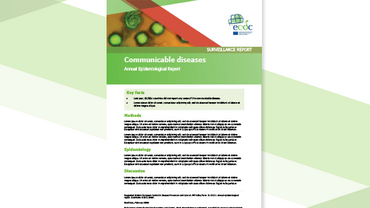Molecular typing of Neisseria gonorrhoeae
In 2011, a pilot study was undertaken to assess the public health benefit of molecular surveillance for gonorrhoea in 21 EU/EEA countries. A total of 1 066 isolates collected under the 2010 European gonococcal antimicrobial surveillance programme were typed and 406 sequence types identified, with considerable diversity among countries.
Although the pilot study had limitations (sample representativeness and quality of the epidemiological data), performing molecular typing of gonorrhoea demonstrated significant potential in terms of public health benefit. Identification of associations between molecular type and antimicrobial resistance profiles can aid understanding of the dissemination of resistance within a population and facilitate development of targeted intervention strategies.
Future work in this area could collate longitudinal representative typing data linked to detailed epidemiological information and focus on achieving greater differentiation among the predominant types.
Executive Summary
Molecular typing of Neisseria gonorrhoeae aims at strain specific identification of the causative agent of gonorrhoea. Typing of the bacterial strains has the potential to provide insight into the dissemination of strains that are resistant to antibiotics and for detecting outbreaks that are not immediately apparent when using current surveillance methods. Consequently, improved understanding of the molecular epidemiology of gonorrhoea may help to inform intervention and control strategies for this sexually transmitted infection. The ECDC pilot study aimed to assess the usefulness of molecular typing of N. gonorrhoeae at a European level by identifying any associations between specific strains and antimicrobial resistance profiles on the one hand and to provide a baseline for outbreak studies on the other hand. A total of 1 066 isolates were collected as part of the 2010 European gonococcal antimicrobial surveillance programme. While considerable diversity was observed in different countries, three types (sequence types 1407, 2992 and 225) were predominant, albeit at different levels in individual countries. When similar sequence types were grouped into “genogroups” to allow more robust statistical analysis, the most widely distributed genogroup, G-1407, was observed in 20 countries. This genogroup was also associated with resistance to cefixime, one of the current recommended antibiotics against gonorrhoea in Europe. Overall, performing molecular typing of gonorrhoea demonstrated a significant potential public health benefit even though the sample representativeness and quality of the epidemiological data were limitations of the current pilot study. Identification of associations between molecular type and antimicrobial resistance profiles could help to understand the dissemination of resistance within a population and facilitate development of targeted intervention strategies






